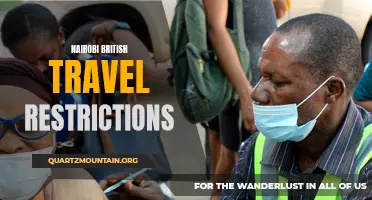
In the face of natural disasters, emergencies, or unforeseen circumstances, evacuations become a necessary measure for our safety and well-being. But how well-prepared are you when it comes to leaving your home at a moment's notice? This comprehensive guide on essential items to pack for an evacuation is here to help you navigate through the chaos and ensure you have everything you need to thrive during these uncertain times. From survival essentials to personal comforts, let's explore the must-haves to include in your evacuation bag, allowing you to stay prepared, efficient, and resilient during any evacuation situation.
| Characteristics | Values |
|---|---|
| Medication | Prescriptions, over-the-counter |
| Water | At least 1 gallon per person per day |
| Food | Non-perishable, easy-to-prepare |
| Clothing | Appropriate for weather |
| Personal documents | Identification, insurance cards |
| Cash and credit cards | |
| Cell phone and charger | |
| Emergency contacts list | |
| First aid kit | |
| Toiletries | |
| Flashlight and batteries | |
| Radio | |
| Important photographs | |
| Extra set of car/house keys | |
| Pet supplies | |
| Baby supplies | |
| Extra blankets or sleeping bags | |
| Whistle | |
| Maps and local information |
What You'll Learn
- What essential items should I pack for an evacuation?
- How much food and water should I pack for each person when evacuating?
- Are there any specific clothes or supplies that would be useful during an evacuation?
- Is there anything important to consider when packing for an evacuation with pets or children?
- Are there any specific documents or personal items that should be included in an evacuation bag?

What essential items should I pack for an evacuation?

When faced with the need to evacuate due to an emergency situation, it is important to have a well-prepared evacuation plan and necessary supplies. In order to ensure your safety and comfort during an evacuation, here are some essential items that should be included in your evacuation pack:
Emergency Documents:
- Identification (driver's license, passport)
- Insurance policies
- Contact list with family and friends' phone numbers
- Health insurance information
- Important documents (birth certificates, social security cards)
First Aid Kit:
- Bandages
- Antiseptic wipes
- Pain relievers
- Prescription medications
- Antihistamines
- Tweezers
- Scissors
- Thermometer
- Any necessary medical supplies
Food and Water:
- Non-perishable food items (canned goods, granola bars)
- Bottled water (at least one gallon per person per day)
- Baby formula and food (if applicable)
- Pet food and water (if applicable)
Clothing and Personal Items:
- A change of clothes for each family member
- Undergarments and socks
- Sturdy shoes or boots
- Raincoat or poncho
- Blankets or sleeping bags
- Personal hygiene items (toothbrush, toothpaste, soap, etc.)
- Glasses or contact lenses and solution
- Diapers and wipes (if applicable)
- Comfort items for children (stuffed animals, toys)
Tools and Supplies:
- Battery-powered or hand-crank radio
- Flashlight and extra batteries
- Cell phone and charger
- Whistle (to signal for help)
- Multi-purpose tool (Swiss Army knife)
- Duct tape
- Plastic sheeting or tarps
- Cash and coins (in case of power outages)
- Maps of the area and a compass
Important Personal Items:
- Cash and credit cards
- Keys (house, car)
- Important jewelry or sentimental items
- Important documents (real estate papers, wills, etc.)
Entertainment and Comfort Items:
- Books or magazines
- Portable games or playing cards
- Comfort items (pillows, stuffed animals)
- Portable phone charger or power bank
It is important to review and update your evacuation pack regularly, keeping in mind the changing needs of your family. Additionally, it is wise to store your evacuation pack in an easily accessible location and inform all family members of its whereabouts. Being prepared with essential items can help alleviate stress and ensure a smoother evacuation process in times of emergency.
Essential Items to Pack for a Coach Tour Holiday
You may want to see also

How much food and water should I pack for each person when evacuating?

When evacuating during an emergency situation, it is important to ensure that you and your family have enough food and water to sustain yourselves until help arrives or the situation improves. Packing the right amount of food and water is crucial, as it will determine how well you can survive during the evacuation period. Here are some guidelines to help you determine how much food and water you should pack for each person when evacuating.
- Calculate the number of days you will be away: The first step in determining how much food and water to pack is to estimate the number of days you will be away from your home. This will give you a rough idea of how long you need to sustain yourselves. Consider factors such as the predicted length of the emergency, and how long it may take for rescue and relief efforts to reach you.
- Water: Water is the most essential item to pack when evacuating. You should aim for at least one gallon of water per person, per day. This is the minimum requirement for drinking and basic hygiene, including cooking, cleaning, and personal hygiene needs. If you have access to a reliable water source, such as a nearby stream or river, you may be able to reduce the amount of water you pack by using a water filtration system or purification tablets.
- Food: When it comes to food, you should aim for a balance of non-perishable items that provide energy and nutrition. Pack foods that are easy to store and prepare, such as canned goods, dried fruits, nuts, and granola bars. Aim for a daily calorie intake of at least 2,000-2,500 calories per person. This will provide enough energy to sustain you during the evacuation period. Consider any dietary restrictions or allergies when selecting food items.
- Consider special needs: If you or any of your family members have special dietary needs, such as allergies, diabetes, or specific dietary restrictions, make sure to pack suitable food items that cater to those needs. It is important to maintain a balanced diet even during emergency situations to avoid any health complications.
- Don't forget utensils and cooking equipment: When packing food, it is essential to include utensils and cooking equipment. This may include disposable plates, bowls, and cutlery, a portable stove, pots, and pans, or even a grill if you have space. These items will allow you to properly prepare and cook your meals, making your evacuation period more comfortable.
- Rotate your supplies: It is important to regularly check and rotate your emergency food and water supplies to ensure they remain fresh and safe to consume. Set reminders to check the expiration dates of your food items and replace them as needed. Additionally, make sure to store your supplies in a cool, dry place away from direct sunlight.
- Additional considerations: In addition to food and water, there are other items you should consider packing when evacuating. These may include first aid supplies, medications, a flashlight, extra batteries, a battery-powered radio, a portable phone charger, and a change of clothes. It is also helpful to have important documents, such as identification cards, passports, and insurance papers, readily accessible.
In summary, when evacuating, it is essential to pack enough food and water to sustain each person. Aim for at least one gallon of water per person, per day, and a daily calorie intake of 2,000-2,500 calories. Consider any special dietary needs or restrictions when selecting food items. Don't forget to include utensils and cooking equipment, and regularly rotate your supplies to ensure freshness. By following these guidelines, you can be better prepared for any emergency evacuation situation.
The Essential Packing Guide for Iceland in April
You may want to see also

Are there any specific clothes or supplies that would be useful during an evacuation?

When it comes to evacuations, being prepared is key. There are several items and supplies that can be incredibly useful during an evacuation. In addition to the basics like food, water, and a first aid kit, it is important to have specific clothes and supplies that can help you safely navigate through an evacuation. Here are some of the most important ones:
- Sturdy shoes: During an evacuation, you may need to walk long distances or over uneven terrain. Having a pair of sturdy, comfortable shoes can make a huge difference in your ability to move quickly and safely. Opt for closed-toe shoes with good traction to protect your feet and prevent slips and falls.
- Protective clothing: Depending on the nature of the evacuation, it may be necessary to protect yourself from hazardous materials or extreme weather conditions. Consider packing a rain jacket, a hat, gloves, and goggles to shield yourself from the elements. Additionally, if you are evacuating due to a chemical spill or natural disaster, it is important to have a mask or respirator to protect your lungs from harmful particles in the air.
- Identification and important documents: In any emergency situation, it is crucial to have your identification and important documents readily accessible. Keep a copy of your driver's license, passport, insurance papers, and any other important documents in a waterproof and easily accessible container. This will help ensure that you have the necessary information in case you need to access emergency services or prove your identity.
- Personal hygiene items: In the midst of an evacuation, it can be easy to overlook personal hygiene. However, it is important to pack items such as toothbrushes, toothpaste, soap, and hand sanitizer to maintain good hygiene. These small items can go a long way in preventing illness and maintaining a sense of normalcy during a stressful situation.
- Emergency communication devices: During an evacuation, it is crucial to stay informed and be able to communicate with others. Pack a fully charged cell phone and a portable charger. Additionally, consider investing in a battery-powered or hand-crank radio to stay updated on the latest news and emergency information.
- Emergency cash and spare keys: In the event of an evacuation, access to banks or ATMs may be limited. It is important to have some emergency cash on hand to cover immediate expenses such as food, transportation, or accommodations. Additionally, keep a spare set of keys in your emergency kit in case you are unable to retrieve your keys from your residence.
Overall, having the right clothes and supplies when evacuating can greatly improve your safety and comfort during a stressful situation. By prioritizing items like sturdy shoes, protective clothing, identification, personal hygiene items, emergency communication devices, and emergency cash, you can better prepare yourself for any potential evacuation scenario. Remember to regularly check and update your emergency kit to ensure that it remains fully stocked and ready to go at a moment's notice.
Essential Items to include in your Eagle Creek Packing List
You may want to see also

Is there anything important to consider when packing for an evacuation with pets or children?

When faced with the need to evacuate your home due to an emergency, it's important to consider the needs of your pets and children. Many people forget to plan and pack accordingly for their furry friends and little ones, which can lead to added stress and chaos during an already difficult time. To ensure a smooth evacuation, there are a few important things to consider when packing for an evacuation with pets or children.
First and foremost, it's crucial to have a designated emergency kit for your pets. This kit should include essential items such as food, water, medication, and any necessary supplies for your pet's specific needs. It's also a good idea to have copies of your pet's medical records, identification tags, and a recent photo of your pet in case they become separated from you during the evacuation.
Additionally, it's important to have a secure carrier or crate for your pets. In an emergency situation, your pets may become anxious or frightened, so having a safe and comfortable space for them is essential. Make sure the carrier is appropriately sized for your pet and that it is well-ventilated and easily transportable.
When it comes to packing for children, it's equally important to be prepared. Have a separate emergency kit specifically for your children that includes essential items such as clothing, diapers (if applicable), medication, and comfort items such as toys or blankets. It's also a good idea to have a recent photo of your child and their identification information in case they become separated from you.
In addition to packing essential items, it's crucial to have a plan in place for how you will communicate and stay connected during the evacuation. This includes having reliable communication devices such as cell phones, chargers, and a backup power source. Make sure your children and pets have identification tags with your contact information in case they are found by someone else.
Lastly, it's important to practice your evacuation plan with your pets and children ahead of time. This will help them become familiar with the process and reduce the stress and confusion they may experience during a real emergency. Practice using the carriers or crates, and ensure that your pets are comfortable being confined for extended periods of time.
To further illustrate the importance of these considerations, let's consider two scenarios. In the first scenario, a family is caught off guard by a sudden evacuation order. They have no emergency kits prepared for their pets or children, and they struggle to gather necessary supplies amidst the chaos. This results in added stress and disorganization during the evacuation, making it difficult for everyone involved.
In contrast, in the second scenario, a family has carefully planned and prepared for an evacuation with their pets and children. They have designated emergency kits for each family member, with all necessary supplies readily available. They have practiced their evacuation plan and have secure carriers for their pets. As a result, they are able to quickly and efficiently evacuate, ensuring the safety and well-being of everyone involved.
In conclusion, when packing for an evacuation with pets or children, it's important to consider their specific needs and prepare accordingly. Have designated emergency kits for each family member, including essential items and important documents. Practice your evacuation plan ahead of time to reduce stress and confusion during a real emergency. By taking these steps, you can ensure a smooth and organized evacuation, providing the best possible care for your pets and children in a time of need.
The Essential Items to Pack in Your Suitcase for a Stress-Free Trip
You may want to see also

Are there any specific documents or personal items that should be included in an evacuation bag?

In the event of an emergency or natural disaster, having an evacuation bag prepared and ready to go is essential. This bag should contain all the necessary items to sustain you and your family for a few days until help arrives or the situation is resolved. While it is important to include items like food, water, and clothing in your evacuation bag, there are also specific documents and personal items that should be included to ensure your safety and well-being.
First and foremost, it is crucial to include copies of important documents in your evacuation bag. This includes identification documents such as passports, driver's licenses, and social security cards. These documents will help to establish your identity and may be necessary if you need to access certain services or resources during the evacuation process. Additionally, it is advisable to include copies of important financial documents, such as insurance policies, bank account information, and deeds to any property you own. These documents can help to facilitate the claims process and ensure that you have the necessary information to manage your affairs in the aftermath of the emergency.
In addition to important documents, there are personal items that you should include in your evacuation bag to ensure your comfort and well-being. One of the most important personal items to include is medication. If you or someone in your family requires medication to manage a chronic condition or illness, it is essential to have an adequate supply on hand. Remember to check expiration dates regularly and rotate medications as needed. Along with medication, it is also a good idea to include a first aid kit in your evacuation bag. This should contain basic medical supplies such as bandages, antiseptic wipes, and pain relievers.
Another personal item that should be included in your evacuation bag is a set of spare keys for your home and vehicle. In the event of an evacuation, you may need to access your home or vehicle quickly and having spare keys readily available can save valuable time. It is also wise to include a flashlight and spare batteries in your bag. This will ensure that you have a reliable source of light in case of power outages or other emergency situations.
Lastly, consider including sentimental or irreplaceable items in your evacuation bag. While these items may not be essential for your immediate survival, they can provide comfort and a sense of normalcy during a stressful time. Examples of sentimental items could include family photos, letters, or small heirlooms that hold special meaning. These items can help to provide a sense of familiarity and comfort during an uncertain time.
In conclusion, while it is important to include essentials such as food, water, and clothing in an evacuation bag, it is equally crucial to include specific documents and personal items. Copies of important documents such as identification and financial records can help to ensure that you have the necessary information to manage your affairs during and after an emergency. Personal items such as medication, spare keys, and sentimental items can provide comfort and peace of mind. By including these items in your evacuation bag, you can be better prepared for any emergency or natural disaster that may arise.
Essential Items to Pack for a Deployment to Al Dhafra
You may want to see also
Frequently asked questions
When packing for an evacuation, it is important to include essential items such as water, non-perishable food, medications, first aid supplies, important documents, cash or credit cards, a change of clothes, personal hygiene items, and a portable phone charger. These items will help ensure your basic needs are met during the evacuation.
It is recommended to pack at least one gallon of water per person per day for an evacuation. This is to ensure that you have enough drinking water for hydration and basic hygiene needs. If you have pets, also remember to pack water for them, as they will also require hydration.
When evacuating, it is important to have important documents readily available. This includes identification documents (such as passports, driver's licenses), health insurance cards, social security cards, birth certificates, and marriage certificates. It is also advisable to keep copies of these documents in a waterproof and fireproof container or store them digitally in a secure location. Additionally, it may be useful to have copies of any medical records, insurance policies, and contact information for emergency contacts.







